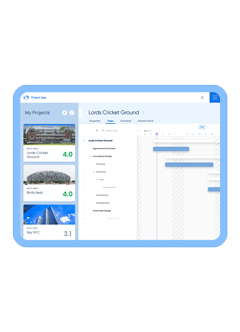Architecture, engineering and consultancy firms are responsible for their projects’ social and environmental impacts. During the design stage, architects, engineers and other project stakeholders make decisions that they may not realize can impact the project throughout its lifecycle. This stage is where many crucial decisions about firm projects are made, and it provides an opportunity to find creative ways to infuse sustainability initiatives into the workflow.
What Is Sustainable Design?
The definition of sustainable design is ensuring that what we use today and how we use it doesn’t adversely affect the ability of future generations to live comfortably on Earth. To create sustainable services and products, we must consider the environmental, social and economic impacts from beginning to end.
Sustainable Design Strategies
An architect or engineer can use various tools and approaches to ensure that their project meets its functional and market needs, minimizing negative impacts on people and the environment. Sustainable design strategies have been around for a while, but the need for such considerations has increased as the move toward a circular economy becomes more prevalent.
Using the following strategies in the creative process challenges and reveals new ways to deliver functionality and value.
- Project Stewardship
Sustainable design means taking responsibility for the whole life of your product and/or project, from design through production and end-of-life management. Commit to every sustainability effort associated with the project, and ensure the entire team knows how important those efforts are in the bigger picture. - Material Reduction
The more materials you use, the more significant the ecological impact. So, you can reduce a project’s environmental impact by scaling back the design’s weight and size, and using fewer materials in production. You can also recover wasted resources by considering how to reuse materials instead of throwing them out. Find a balance between quality, functionality and optimal material usage. - Material Selection
The materials you introduce are just as important as the materials you reduce. Review the types of materials you typically use for your projects, and consider making sustainability-focused changes. Reduce your negative impact on the environment by shifting from fossil fuels to renewable energy. Invest in green building materials by partnering with companies that use environmentally responsible manufacturing techniques to produce steel, lumber and concrete. - Longevity
Longevity means producing durable, timeless projects that maintain their value over time so they can be resold by firms or passed on to corporations or communities. As long as the style and functionality are durable, a long-lasting development can be upgraded or repaired during its lifetime. This reduces a project’s overall footprint by eliminating the resources required for demolition and starting a new project from scratch in its place. - Community Partnership
One man’s trash is another man’s treasure. Look for opportunities to partner with other companies or local organizations that can use your project’s by-products as materials for other projects or processes. This is called industrial symbiosis and it’s a win-win for everyone involved: your firm, the partnering organization and the community as a whole. - Positive Impact
There is an immense opportunity to design projects that positively impact society. Be a part of that change by introducing sustainability-led options during your next consulting project. Consider how you might design things to offer people an alternative perspective and/or preserve natural resources.
Achieve More Effective Project Management With BST Global
We created BST10 with the project manager in mind. Project creation is made easy with our project-focused approach, while our flexible work breakdown structure gives project managers the freedom to design projects the way they want to. Schedule a custom demo today to learn how BST10 can empower your project creation, improve team collaboration and evolve to meet your business needs consistently.










